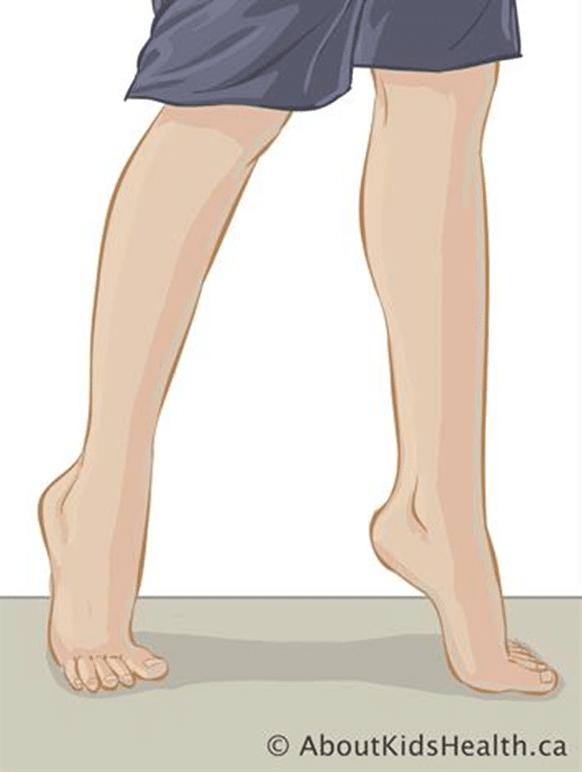What is toe walking?
Toe Walking is a phenomenon where a child walks on their tiptoes instead of using their full foot. While it may seem harmless at first, persistent toe walking can have detrimental effects on a child’s development. Toe walking can hinder the development of important gross motor skills, such as balance and coordination. It can also lead to muscle imbalances, affecting a child’s overall posture. Additionally, toe walking can lead to a shortened achilles tendon, commonly referred to as the heel cord, which can lead to a loss of motion. Over time, with persistent toe walking, the heel cord can become so tight that surgery could be required to correct the tightness.

Children who toe walk may also face social challenges as they stand out among their peers, potentially leading to self-esteem issues. It also may be linked to sensory processing disorders, affecting a child’s ability to process sensory information effectively.
Toe walking is normal in children under the age of 2 years old, but it can become a problem if the toe walking persists past that age. Early intervention is imperative to the long-term success of physical therapy for toe walkers.
How can Physical Therapy help?
For children who primarily walk on their toes, physical therapy can help correct their walking pattern by addressing the underlying issues that lead to the child’s toe walking preference.
If the child is walking on their toes due to tightness, we can stretch out the back of the child’s leg which can lead to an increase in their range of motion. Encouraging the child to play at home while in a deep squat position, ensuring their heels are on the ground, can help stretch out the heel cord helping to decrease tightness. Other ways to stretch include having the child hang their heels off the edge of a step to stretch the back of their leg.

Deep Squat Position

Calf stretch off step
Another activity to address toe walking could be to have the child walk up an incline, such as a slide. This will encourage a stretch along the back of their leg as well as strengthen their leg muscles.
If a child is walking on their toes due to not enough sensory input, you can put a squeaker on the heel of their foot and encourage them to make it squeak to ensure adequate heel contact. If the child is getting overwhelmed by the sensory input you can massage the heel to lessen the sensory input localized at the ball of the foot.
In addition to physical therapy, and in severe cases of toe walking, your doctor might recommend getting the child fit for orthotics. You can have day time orthotics that would be more flexible and allow the child to still perform the heel to toe walking pattern. There are also night splints that can be prescribed that are stiff and rigid to stretch the child’s calf and heel cord while they sleep. Orthotics can be uncomfortable for children at first but with consistency it can easily become a part of the child’s routine.
Toe walking can hinder your child’s motor development and the sooner the issue can be addressed, the sooner we can get your child to their full potential.
By: Kelsey MacTough, PTA




